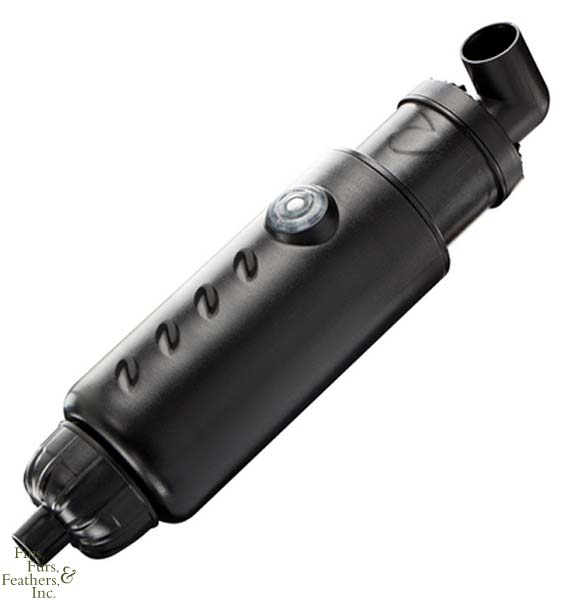ULTRAVIOLET STERILIZERS: Do You UV?
ULTRAVIOLET STERILIZERS: Do you UV?
Within natural sunlight is a wide array of wavelengths of light, each serving its own purpose. Today we will investigate the properties of Ultraviolet light and its effects on particular life forms. Most UV lights you see illuminate posters or are used in parties in florescent bulbs. These are a slightly different wavelength than the UV we use for sterilizing.

Oceanic BioCube 5W Mini UV Sterilizer Image via Marinedepot.com
At 254nanometers, UV light can alter genetic makeup of microorganisms via radiation. Imagine a concentrated sunburn machine. This can sterilize counter tops, food areas, bathrooms, the inside of your mouth, and of course, water! Any living particle is vulnerable to UV radiation, and at the right flow rate and intensity you can completely rid your water of any living thing, as long as it passes through the beam of light. Knowing what you want to use this for will help when setting up your UV properly. Parasites require more reaction time with the UV rays than algae and bacteria, which can be controlled by using the right sized pump/wattage ratio.
Here is a quick guide to help narrow your search:
UNDER 75 GALLONS: 8W Bulb @ 120gph
75-100 GALLONS: 15W Bulb @ 75-230gph
100-150 GALLONS: 18W Bulb @ 100-300gph
150-175 GALLONS: 25W Bulb @ 150-475gph
175-300 GALLONS: 30W Bulb @ 175-525gph
300-570 GALLONS: 40W Bulb @ 300-940gph
570-625 GALLONS: 65W Bulb @ 570-1700gph
625-900 GALLONS: 80W Bulb @ 625-1885gph
900-1140 GALLONS: 120W Bulb @ 900-3200gph
1140-1300 GALLONS: 130W Bulb @ 1140-3400gph
Anything larger than that can just use multiple large UV sterilizers on their own feed. @1x turnover rate the parasites are taken care of while the faster flow is good when all you are battling is algae and or bacteria blooms.
Like all illuminating devices, the bulbs will get old and the peak wavelength will be off from its effective range. They are usually simple to replace and replacement bulbs are normally available where the UV sterilizers are sold. Keep in mind that you can permanently damage your eyes if you look directly at an Ultraviolet bulb, so make sure the power is off when changing the bulb or cleaning them out.
The concept of UV is the same amongst all models. Water passes a light which is protected from the water. The light penetrates the water and the flesh of microorganisms. The microorganism either dies or becomes sterile and cannot reproduce. Most UV sterilizers are set up to go inline with your plumbing and consist of a cylinder with a send and return on either end. Some have built in wipers, others are built into canister filters. Larger wattage sterilizers will have external ballasts. Most designs have a quartz sleeve that protects the actual bulb from the water, and can often be replaced when damaged. The more advanced UV sterilizers use T5HO bulbs and are called Gamma UV Sterilizers. These use Germicidal bulbs and are only necessary in extreme situations or very large systems. More than likely, LEDs will eventually make their way into UV sterilizers. These units are not for everyone, but can help in various situations. Make sure you actually have a situation before you invest in something you may not necessarily need.

Water travels into the fixture and around the light. Image via deepseanow.blogspot.com
Start a thread here for help if you cannot find the answer yourself, it will help more than yourself!

Leave a Reply
You must be logged in to post a comment.